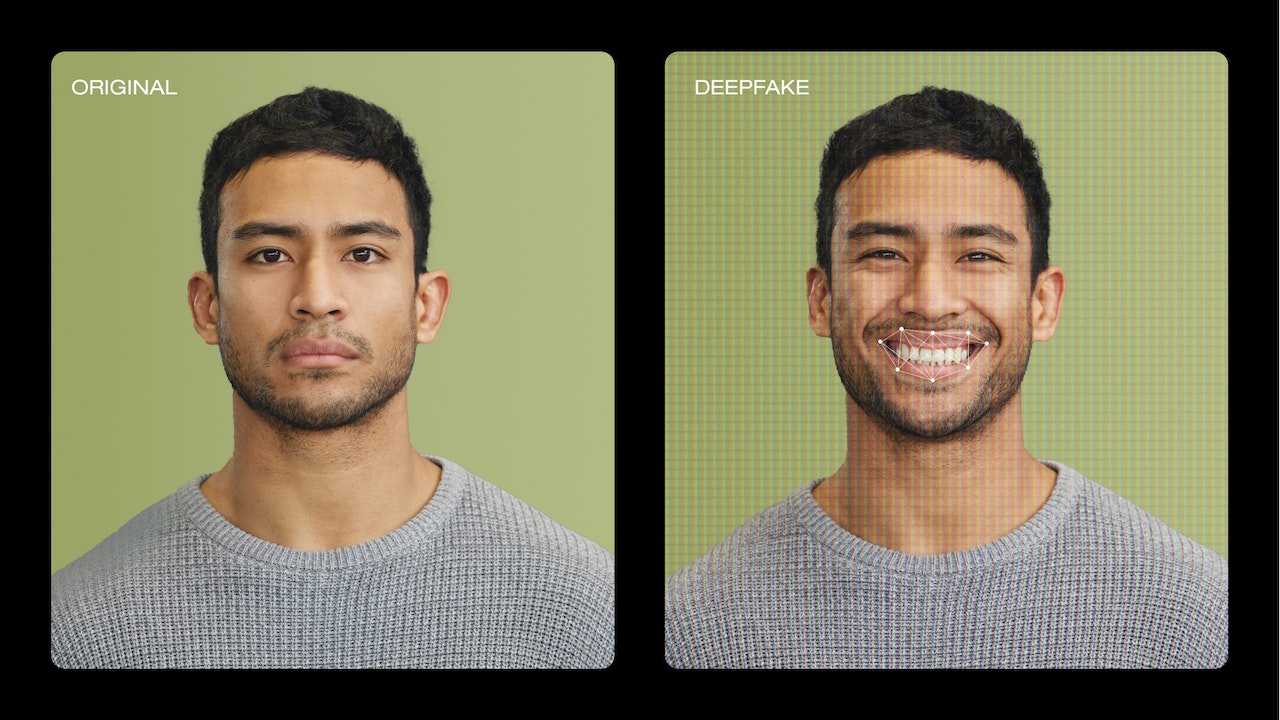When you hear the word “deepfake,” you might immediately think of the ethically ambiguous, fraudulent, or even downright unsettling videos that have bobbled across the internet over the last few years. But as deepfake videos – and the AI technology used to power them – only get more sophisticated, it’s imperative that marketers and creators across every industry learn how they work and explore how they can be applied to get and stay ahead in our changing climate.
For the uninitiated, deepfakes are synthetic media that have been digitally manipulated to replace or replicate a person’s likeness convincingly – resulting in the ability to create videos that look and feel real, but aren’t. It’s understandable, then, that they might get a bad rap for spreading misinformation or exploiting peoples’ likenesses.
Like any technology, though, it’s all in how you use it. Forward-thinking marketers and creators are already using deepfake technology — responsibly and ethically — to create new art forms, tell new stories, and improve their own video campaigns.
In this article, we’ll cover some examples of deepfake technology being used for good, as well as ideas on how to experiment with the tech yourself.
What is a deepfake?
A deepfake is a video, or audio recording, of a person whose face or body has been digitally altered. Deepfakes use AI to create likeness, relying on pattern recognition to match expressions, tone, and movement.
Other terms for a deepfake can include synthetic or artificial media, or AI-generated content.
A brief history of deepfakes
The invention of the Generative Adversarial Networks (GAN) began the trend of realistic deepfakes back in 2014. GANs are made up of two artificial intelligence agents that forge images and detect forgery, allowing the AI to improve over time.
Deepfakes can also be created using a deep learning computer network called a variational auto-encoder (VAE). VAEs are trained to encode images into low-dimensional representations of the subject and then decode those representations back into moving images.
The term “deepfake” wasn’t coined until 2017, and in 2018, the media almost collectively sounded the alarm over deepfakes – with the first viral deepfake videos featuring Barack Obama and Donald Trump making the rounds on social media.
But deepfakes also have uses that are becoming more and more relevant to everyday marketers – not just hackers or internet trolls trying to spread misinformation.
How do deepfakes work?
Machine learning AI is a critical part of developing a deepfake. Deepfakes depend on this tech to spot trends in visuals and information.
To make a deepfake video, a developer needs to provide these machine learning algorithms with hours of actual footage, which then trains the deep neural network to recognize patterns, tone, facial expressions, and more. The next step involves combining those learnings with graphics.
It doesn’t take much to create a deepfake, just existing video or audio of the person you’re trying to recreate. And although it may seem difficult at first, constructing a deepfake doesn’t require complicated tools – only basic graphic design knowledge and video editing skills.
Examples of artful video deepfakes
Marketers are still in early stages of adopting deepfakes and other AI technologies for video and digital marketing. The following deepfake examples don’t exactly fit into a marketer’s toolbox just yet, but they showcase the power of these AI technologies right now.
1. Chris Shimojima’s “Dolche – Big Man”
This stunning Staff Picked music video from filmmaker Chris Shimojima takes deepfake technology and turns it on its head, incorporating faces from 14 different performers (and 40 contributions) to tell a single story. The result is an artful, unexpected combination of tech and human expression.
2. David Beckham’s many languages
Malaria Must Die used AI to manipulate soccer star David Beckham to speak in nine different languages, leveraging deepfake technology to make a big splash and markedly increase their campaign’s reach.
3. Salvador Dali’s museum greeting
It took over 1,000 hours of machine learning for the Dalí Museum to get their deepfake version of Salvador Dali exactly right. This innovation gives museum-goers a new perspective: they get to learn about art from the artist himself!
3 everyday uses for deepfake video tech
While some applications of deepfakes may be beyond the average marketer’s reach, there are many creative and exciting ways to leverage deepfake tech in your own work.
- Fix flubbed lines in post: For anyone with even cursory editing experience, you know the trials and tribulations of cutting together polished audio from a more conversational interview. Whether your subject misspoke or simply didn’t answer with a full sentence, using deepfake technology to fill in the blanks is a great way to keep your post-production process moving without the need for reshoots. (Just make sure you get the subject’s permission first, of course!)
- Personalize customer videos at scale: Marketers can implement easy personalization by sending welcome or product videos that include prospect’s names or their company names. All you need is their names and enough audio from your on-camera talent for deepfake tech to add it into any video.
- Localize your videos: Deepfake tech introduces a new world of easy translation. Instead of relying on subtitles, artificial intelligence can insert translated, spoken audio, either created from an audio bank or from the initial actor’s voice.
New tech, new opportunities
We may not know exactly what the future of AI will bring, but one thing is certain: deepfakes aren’t going anywhere. Just as with other AI-powered tech (chatGPT, anyone?), those willing to experiment with deepfakes with eyes wide open to potential pitfalls will be well-suited to compete in the changing video landscape.

